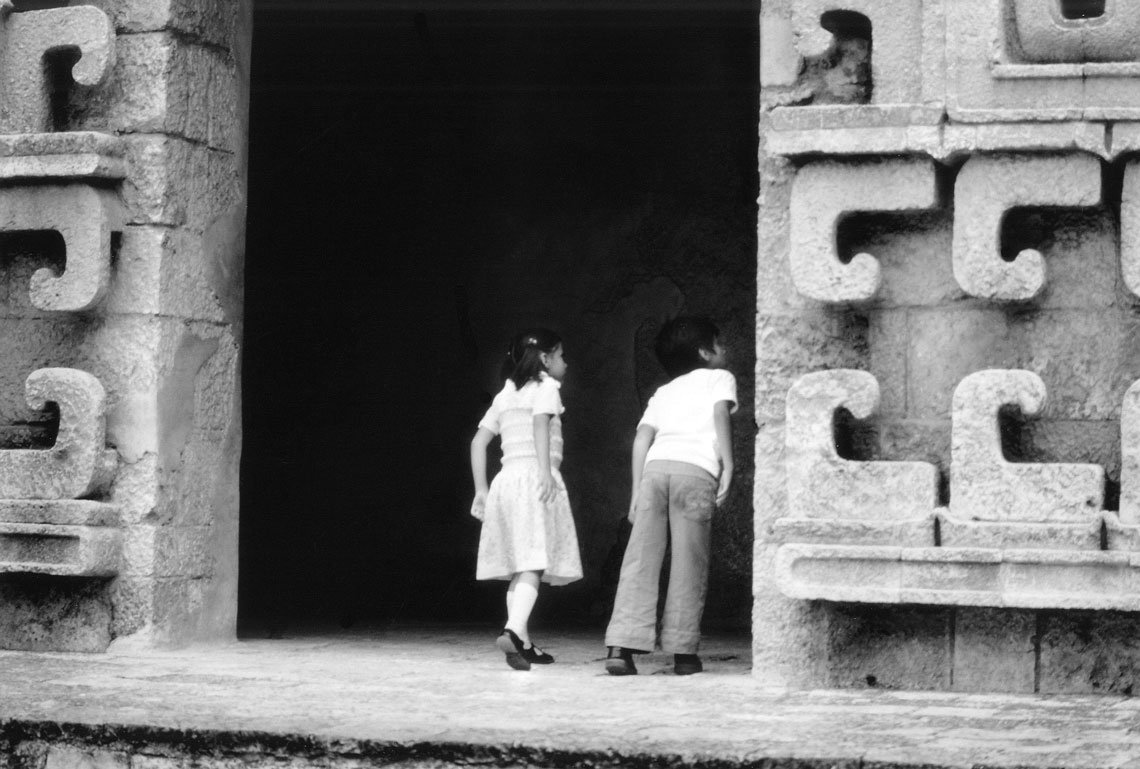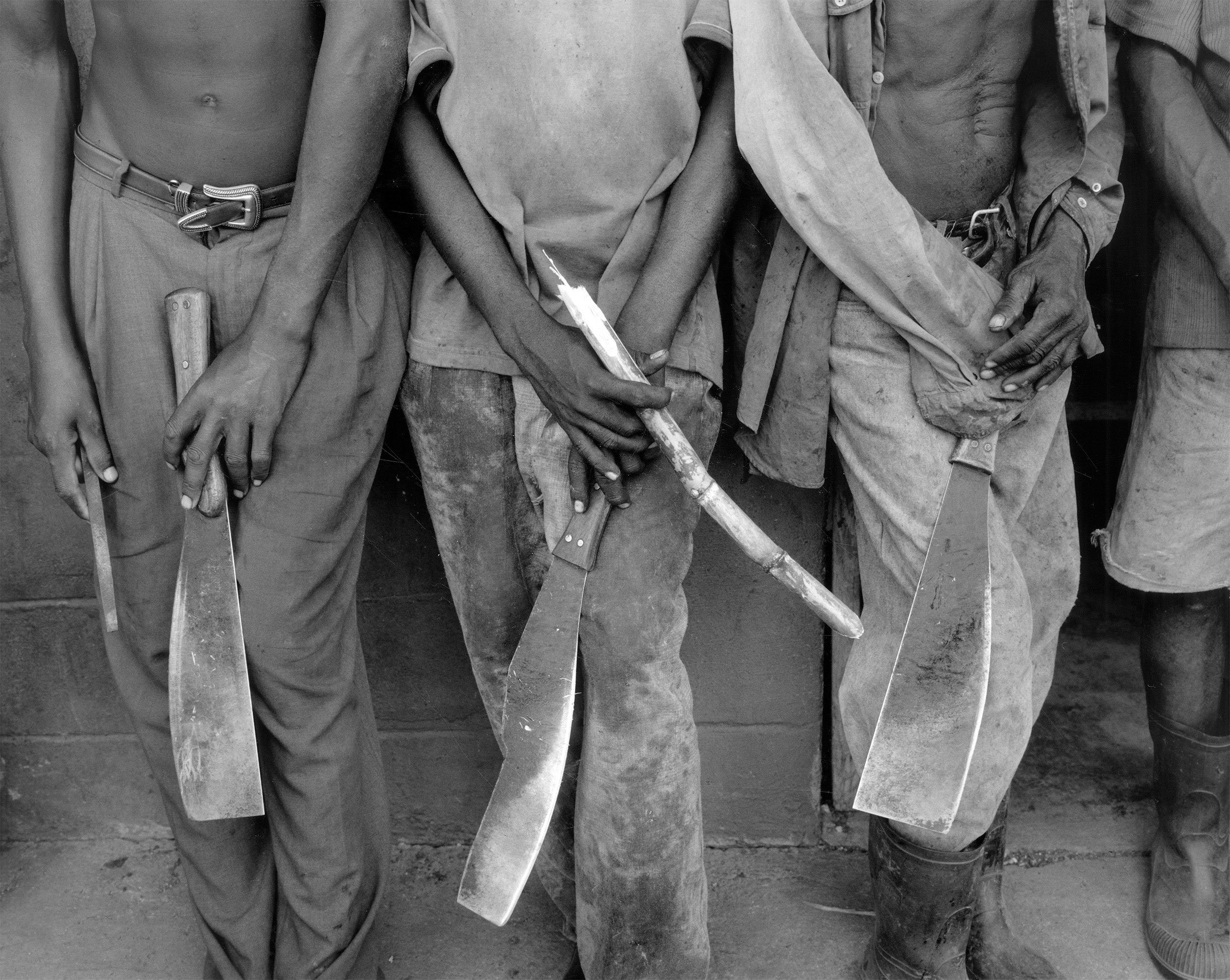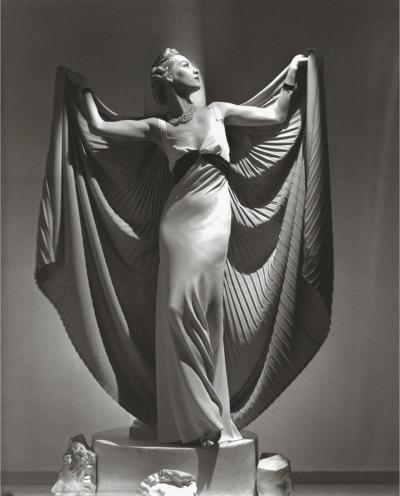From Land to Air, a Trail of Life Experience: A contemporary gaze in Latin American photography
at THROCKMORTON FINE ART, 145 East 57th Street, 3rd Floor, NY, NY
 |
Margaret McCarthy. Niños en el museo de antropología / Children at the Museum of Anthropology, Mexico City. 1978. Pigment on paper, 8-1/2 x 11 in. Signed in pencil on verso. |
From Land to Air, a Trail of Life Experience: A Contemporary Gaze in Latin American Photography
At Throckmorton Fine Art, 145 East 57th Street, New York
Through October 21, 2023
212.223.1059 – www.throckmorton-nyc.com – info@throckmorton-nyc.com
María Millan and Tania Sanabria, guest curators, have collaborated brilliantly with Throckmorton Fine Art to present the exhibition “From Air to Earth, a Trail of Life Experience,” on view at the New York gallery through October 21st. The show, an amalgam of the work of eleven contemporary women photographers from Mexico, Cuba, Argentina, Spain, and the United States is rather eclectic but has a strong, defining focus on humanity and the strength and reliance of the human spirit.
The work in this show was created in Latin America from the mid-1940s to the first decade of this century — quite a span of time, which no doubt accounts for the rich diversity of subject matter, artistic style, and tone. The photographers are Yolanda Andrade, Carmén Ballvé, Marilyn Bridges, Margo Davis, María García, Laura Gilpin, Margaret McCarthy, Isabel Muñoz, Tatiana Parcero, Marta María Pérez Bravo, and Betina Zolkower. Some are well known, like Perez Bravo, but most are not.
 |
Betina Zolkower. Remembrance (1/7), 2021. Archival pigment print, 11 x 11 in. |
 |
Carmen Ballvé. Braceros, 2005, printed 2023. Gelatin silver print, 16 x 19 3/4 in. Signed on verso. |
 | |
María García. Photogram, 1968-73. Gelatin silver print, 10 x 7-15/16 in. Signed in pencil on verso. |
Having spent years of my life living, studying, and traveling in Latin America, some of the imagery is immediately familiar — the documentary style, even sociological portraits of Margo Davis (USA, 1944), an American who traveled throughout the region with her camera capturing everyday life and local people in her photographs. Carmen Ballvé (Spain, 1960) has pursued a similar project having spent 20 years photographing the harsh lives of sugar plantation workers of the Mosquito Batey in the Dominican Republic.
Familiar archeological landscapes, especially the Mexican Mayan ruins, have been documented by many photographers including Laura Gilpin (USA, 1891–1979), who was also a pioneer photographer of Mexican indigenous communities, as well as by Marylin Bridges (USA, 1948) whose experiments with perspective create additional visual interest in her imagery, as in “Castillo from Perpendicular, Chichen Itza” (1982) where a ruin is shot from above. Margaret McCarthy (USA, 1953) was also attracted to Mexico’s cultural history as well as its archeological and pre-Columbian past.
Marta María Pérez Bravo (Cuba, 1959) stands out in this exhibition because of her raw imagination. She is able to allude, insinuate, and convey feelings, thoughts, and ideas about life and her world rather than simply depicting them and therefore her work belongs more properly in the realm of fine arts as opposed to the traditional documentary photography that defines a lot of work in this show. An image such as “Three Offerings” (1995) deftly weaves together issues of religion, politics, and feminism through the depiction of little more than three disembodied female body parts.
 |
| Left: Marta María Pérez Bravo. Tres exvotos / Three offerings, 1995. Gelatin silver print, 10 x 13 in. Edition 1 of 15. Signed, titled, and dated in pencil on verso. Right: Yolanda Andrade. El Caballito, CDMX, 1988. Gelatin silver print, 16 x 20 in. Signed, titled, and dated on verso. |
 | |
Marilyn Bridges. Castillo from Perpendicular, Chichen Itza, 1982. Gelatin silver print, 8 x 10 in. Stamped and signed in ink on verso. |
There is a welcome sense of humor in Pérez Bravo’s photographic work and in the work here also of Yolanda Andrade (Mexico,1951), such as “El Caballito, CDMX” (2023), in which a painted wild horse seemingly gallops across a cloudy sky on a wall above a bed somewhere in the vast Mexican capital. The cinematic quality of this and other images of hers attests to her background in film as well as a taste for popular culture and kitsch.
The subtle abstraction and formal experimentation found in the work of María García (Mexico, 1936) impressed me most in this exhibition. I do not know her work but feel it deserves greater attention and scholarship. She is not so much focused on exploring what is happening outside in the real world but on the unknown horizons of the darkroom. She is a master of darkroom cuisine, testing, and experimenting with light and shadow to create intriguing, beautiful abstraction compositions such as “Photogram (Abstraction 1)” no date.
“Photogram (Abstraction 1)” is interesting to me insofar as we don't know what it depicts — if anything at all. Nor does it say anything in the conventional sense of having a subject or message, it is just two subtly overlapping bands of light hand printed with the tactile chemical density characteristic of silver gelatin prints. Gray tones predominate here in what is, as a composition, more of an abstract painting than a photograph. Nonetheless, this little picture of nothing, nothing at all, steals the show with its elemental ambiguity.
 |































